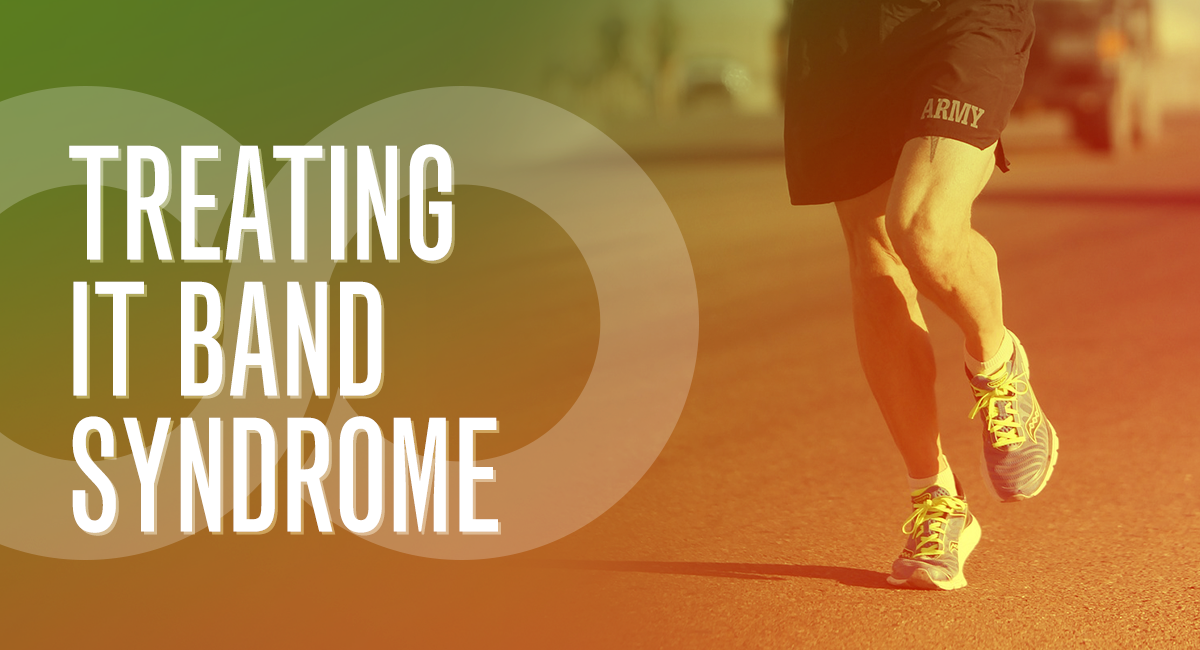Treating IT Band Syndrome

Running and cycling are very popular forms of exercise for many individuals. Whether it is trying to get your heart rate up at the gym or training for marathons and triathlons, these individuals can be susceptible to an injury known as Iliotibial Band Syndrome.
What is iliotibial band syndrome?
Better known as “ITBS”, “IT Band Syndrome” or “Runner’s Knee,” iliotibial band syndrome is a common injury among runners, cyclists, and other athletes that involves the outer portion of the knee joint. The IT band is a thickening of fascia that begins near the hip joint.
How do I know if I have ITBS?
An individual can present with lateral (outer) knee pain just above the joint line (where the knee bends). Other signs and symptoms can include stabbing or stinging pain, swelling at the lateral knee joint, tightness in the lateral hip joint and difficulty walking, climbing, squatting, hopping and other repetitive, high impact exercises. A physical therapist can take you through muscle strength, range of motion, mobility and flexibility measurements. Traditional imaging such as MRI or x-ray is not needed to diagnose ITBS.
What causes ITBS?
Due to the position and location of the connective tissue, repetitive knee flexion (bending) can leading to tightening of the fascia which can exert a compressive force along the outside portion of the knee joint.
Poor muscle strength and range of motion along the hip, knee and ankle joint can also lead to increased force absorption at the knee joint. Other factors include increased landing forces, increased internal rotation (inward turning) of the knee, hamstring and gluteal weakness.
Other external factors can also increase the risk of ITBS such as:
- Worn out running shoes
- Improper training programs
- Rapid increase in running/cycling mileage
- Unstable surfaces
How can I treat this?
Strengthening weaker muscle groups can allow for improved stability around the hip joint, which can prevent some of the increased forces placed upon the knee joint. Addressing strength deficits throughout your core can also help with pelvic stability. Core muscles refer to more than just your abdominals; they include inner thigh, pelvic floor and low back muscles as well.
Prior to strengthening your muscles, it is important that your muscles are at an appropriate length in order to contract and relax properly. One of the biggest tools available for managing symptoms on your own is a self-releasing technique. You can use a lacrosse ball and/or foam roller on your gluteals, hamstrings, gastrocnemius (calf) and plantar fascia to increase your mobility and flexibility before you begin strengthening.
As always, it is important to listen to your body. Those general aches and pain can be a warning sign to potential future injury. Below are some helpful tips, but do not be afraid to contact your physician about starting physical therapy if you are suffering from ITBS.
References:
- Lavine, R. (2010). Iliotibial band friction syndrome. Current reviews in musculoskeletal medicine, 3(1-4), 18-22.
- https://www.choosept.com/guide/physical-therapy-guide-iliotibial-band-syndrome-itbs
- https://www.dubinchiro.com/articles/BioMechanics_April2006_IliotibialBand.pdf